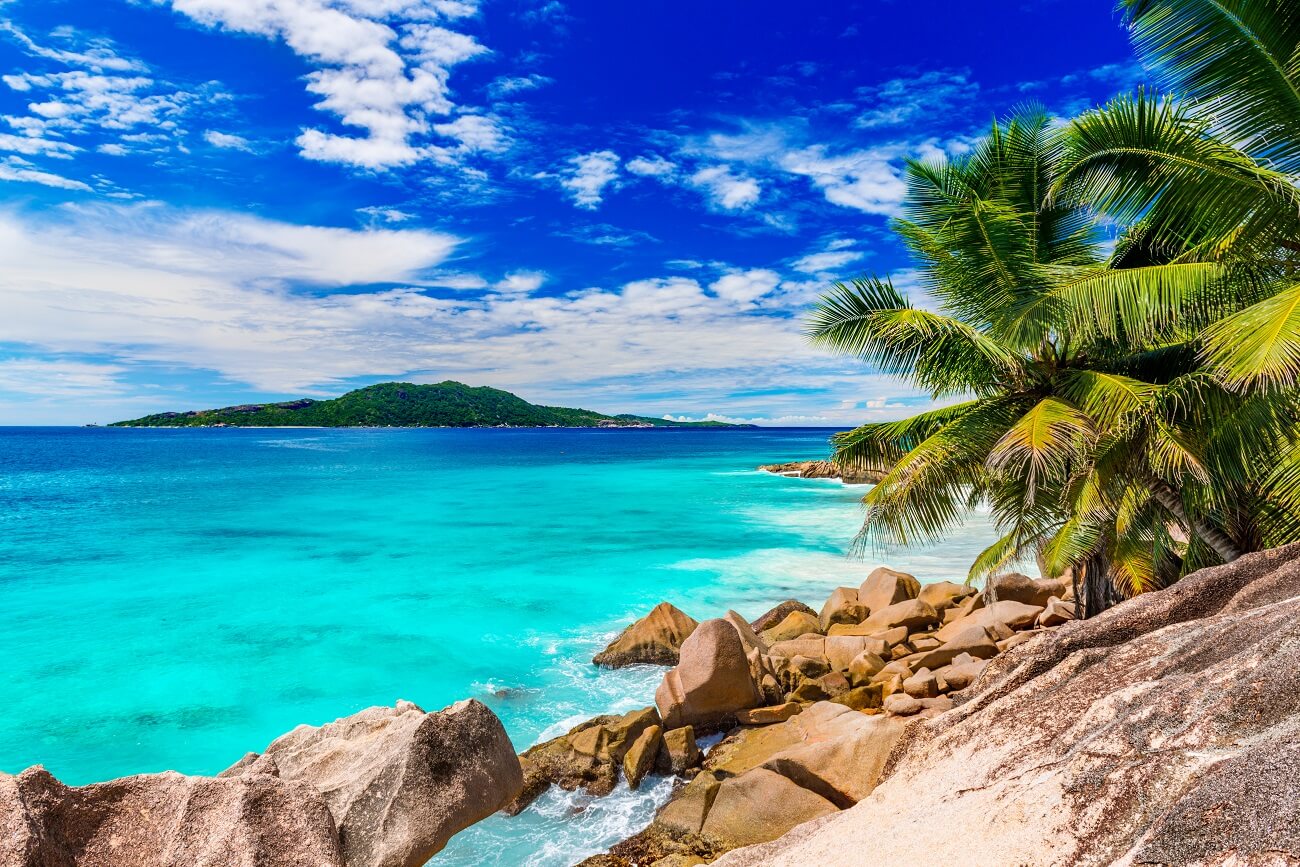

Seychelles archipelago, located in the Indian Ocean, is famous for its impeccable beaches, clean, warm waters and bright scattering of coral reefs. However, under the idyllic surface hidden world, replete with amazing creatures, among which a special place is occupied by sharks, causing travelers different feelings: from curiosity to anxiety. Let's get acquainted with common species, their habits and habitats.

Depositphotos
Shark species in the Seychelles
In the waters surrounding the Seychelles, there are many species of sharks. They range from small, relatively harmless species to larger, more formidable predators. We suggest you take a look at some of the most common species.
Whale shark (Rhincodon typus)
The whale shark is the largest fish in the ocean, reaching a length of 12 meters or more. Despite their size, these giants, feeding mainly on plankton and small fish, do not pose a danger to humans. Whale sharks are found all year round in the Seychelles, including the coast of Mahe. At the same time, their peak in these waters is observed in June-August and October-November.

Depositphotos
Reef shark (Carcharhinus melanopterus)
This small, agile shark, usually no more than one and a half meters long, is easily recognized by the characteristic black tips on the fins. Blackfin reef sharks are often found in shallow coral reefs and lagoons, but can also descend to a depth of about 75 meters. They are generally not dangerous to humans and differ somewhat timid nature.

Depositphotos
Dark gray sharks (Carcharhinus amblyrhynchos)
This energetic predator can be easily recognized by the characteristic marks: a white border on the dorsal fin and a black border on the tail fin. The size of the shark, as a rule, does not exceed 2 meters. They are capable of aggression.

Depositphotos
Lemon shark (Negaprion) cutidens)
These unhurried predators are endangered. Representatives of the species can grow up to almost 4 meters and are found closer to marshy mangroves, in lagoons, as well as over sandbanks and coral reefs. Despite their strong physique, they usually do not show aggression towards a person, but are considered potentially dangerous and quite capable of defending themselves.

Depositphotos
Red or rusty baby shark (Nebrius ferrugineus)
This nocturnal predator, active at night, is considered a vulnerable species and is often caught for commercial purposes. Prefers octopuses for food, but does not refuse crustaceans, squid and small fish. It has an unusual ability to change its color from gray to sandy brown depending on the environment. It can reach a 3-meter length, but despite its impressive size, it is usually quite friendly to divers.

Depositphotos
Hammerhead Shark (Sphyrna lewini)
This species of shark, which got its name because of its characteristic head shape, is endangered. One of the habitats are the waters that wash the Seychelles, in particular, the island of Alphonse.

Depositphotos
Shark diving
For experienced divers, some operators offer controlled dives with sharks accompanied by qualified instructors. So, where can you swim with sharks in the Seychelles?
- Not far from Mahe.. One of the most famous dive sites in the Seychelles is Shark Bank, located 8 kilometers away from Mahe. The location is known for its stunning underwater topography and bubbling marine life. There are a number of granite boulders and sandy areas, creating a comfortable habitat for reef and sometimes whale sharks.
- Baie Ternay Marine Park It is a protected area with diverse marine life and excellent visibility. Its calm waters are suitable for divers of any level of training. The location provides frequent encounters with sharks, particularly lemon and whale sharks.
- Aldabra Atoll, listed as a UNESCO World Heritage Site, it is one of the world’s largest coral atolls. Its remote location and protected status make it a haven for marine life, including blacktip reef sharks.
- Dive sites near a Alphonse private island are a place of frequent encounters with the nurse shark (West Side Wall, Eagle's Nest, Wonderland), the gray reef shark (The Pinnacles, East Side Wall), and the hammerhead shark (Galawa, Arcade, Maggi's Cliff).
- Poivre IslandOne of its best dive sites, Turtle Ridge, offers encounters not only with green turtles, but also with manta rays, as well as reef sharks.

Depositphotos
Safety of swimming in the Seychelles
The presence of sharks in Seychelles waters raises important questions about the safety of swimming and other water activities. Although the presence of predators can be fearful, it is important to remember that shark attacks in the Seychelles are extremely rare. According to statistics, the risk of being attacked by a shark is much lower than other everyday risks. Most shark species in this region are not aggressive towards humans.
A few safety tips to ensure harmonious interaction with these amazing creatures:
- Swim in designated areas that are monitored for safety, including potential shark activity.
- Avoid swimming at dusk and dawn. Sharks are more active at this time when they are looking for food.
- Stay in groups. Sharks are less likely to approach crowds. Avoid swimming alone, especially at great depths.
- Do not try to touch the shark, feed it or provoke it in any way.
The Seychelles archipelago with its rich marine life offers a unique opportunity to meet different sharks in their natural habitat. With proper precautions, swimming and water activities will be quite safe.

Depositphotos
More articles
- Top 12 Bali Hotels for Wellness
- Top 10 Places to See in the Seychelles
- Bali hotels in the jungle: 10 most beautiful
- Hotel in Bali with breakfast included: 10 popular places
- The Best Boutique Hotels in Bali
- The best hotels in Seychelles on the coast - 10 corners
- The best resorts in Bali: where to relax on the island
- Seychelles hotels with the best restaurants
- Hotels Seychelles Adults Only
- Best luxury hotels in the Seychelles according to Forbes Travel Guide



